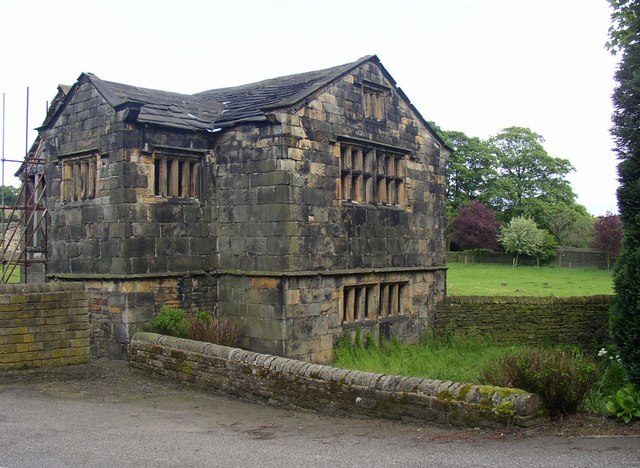Kirklees Hall on:
[Wikipedia]
[Google]
[Amazon]
 Kirklees Hall is a 16th-century Grade I listed Jacobean hall, close to the English village of Clifton in Calderdale,
Kirklees Hall is a 16th-century Grade I listed Jacobean hall, close to the English village of Clifton in Calderdale,
 Kirklees Hall is a 16th-century Grade I listed Jacobean hall, close to the English village of Clifton in Calderdale,
Kirklees Hall is a 16th-century Grade I listed Jacobean hall, close to the English village of Clifton in Calderdale, West Yorkshire
West Yorkshire is a metropolitan and ceremonial county in the Yorkshire and Humber Region of England. It is an inland and upland county having eastward-draining valleys while taking in the moors of the Pennines. West Yorkshire came into exi ...
.
The first evidence of a hall constructed at Kirklees was that of Sir Thomas Gargrave, who conveyed the property to the Pilkington family.
After the estate was acquired by the up-and-coming Armytage family, the stone built hall was altered c.1770 by John Carr for the Sir George Armytage, 3rd Baronet. The Armytage family went on to occupy the hall for several generations.
Lady Armytage (d: 2008 aged 81), sold the property in 1983 and moved into Priory Gardens a property she built within Kirklees Park estate adjacent to Old Farm (formerly Low Hall) and the Kirklees Priory site. The former gatehouse part of the Old Farm (Low Hall) complex can still be seen, though the site is on private land and has no public access.
Kirklees Hall and grounds designed after Francis Richardson are now a collection of luxury residences set in 18 acres and are annexed from Kirklees Park estate which are private with no public access.
Robin Hood associations
In the 12th century, the Cistercians built Kirklees Priory. It is connected to the legend ofRobin Hood
Robin Hood is a legendary heroic outlaw originally depicted in English folklore and subsequently featured in literature and film. According to legend, he was a highly skilled archer and swordsman. In some versions of the legend, he is dep ...
as it is said to be his final resting place. In the folklore
Folklore is shared by a particular group of people; it encompasses the traditions common to that culture, subculture or group. This includes oral traditions such as tales, legends, proverbs and jokes. They include material culture, ranging ...
song ''Geste'' it is said that Robin Hood was the nephew of the prioress, who sheltered him when he was fleeing from the Sheriff of Nottingham
The Sheriff of Nottingham is the main antagonist in the legend of Robin Hood. He is generally depicted as an unjust tyrant who mistreats the local people of Nottinghamshire, subjecting them to unaffordable taxes. Robin Hood fights against him, ...
. She drained his blood (as was a common medicinal
Medicine is the science and practice of caring for a patient, managing the diagnosis, prognosis, prevention, treatment, palliation of their injury or disease, and promoting their health. Medicine encompasses a variety of health care practic ...
practice in those days). She drained too much and he died. Though one can not be certain of her intentions, local folklore tells us that it was murder. The site of Robin Hood's Grave is marked on the local Ordnance Survey
Ordnance Survey (OS) is the national mapping agency for Great Britain. The agency's name indicates its original military purpose (see ordnance and surveying), which was to map Scotland in the wake of the Jacobite rising of 1745. There was a ...
map.
The grave is located a short distance from the building where Robin Hood died, although archery experts have stated that the distance covered would not have been possible with bows of that time, never mind Robin's strength in his last moments. The grave is clearly marked as belonging to Robin Hood. The priory gatehouse and grave are located on private land.
Notes
Country houses in West Yorkshire Grade I listed houses Grade I listed buildings in West Yorkshire Buildings and structures in Calderdale {{WestYorkshire-struct-stub